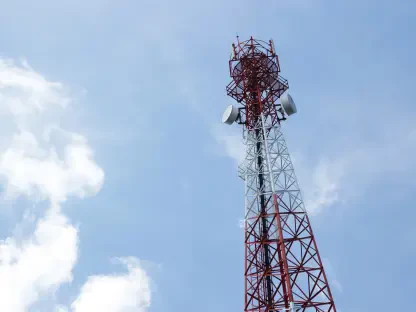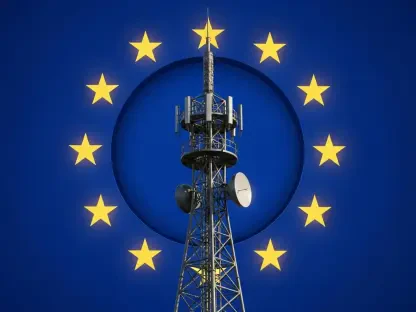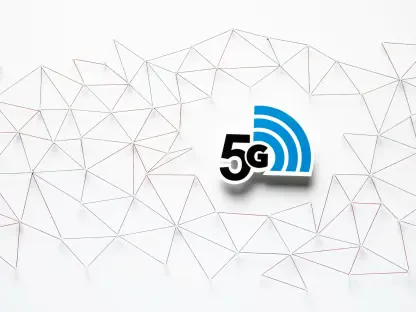The rapid advancement of 5G technology is transforming connectivity as we know it. For many devices, particularly those within the Internet of Things (IoT) ecosystem, traditional 5G may be overkill, providing more bandwidth than is necessary while consuming significant power. Enter the RedCap API, or Reduced Capability API. This innovation aims to provide 5G connectivity to lower-powered, less complex IoT devices, striking a balance between performance and efficiency.
The ever-growing network of IoT devices demands a broad spectrum of connectivity solutions tailored to specific needs. 5G has promised heightened speeds and efficiency, but the power and bandwidth needed for full-scale 5G can be excessive for many IoT applications. The RedCap API serves as a bridge, offering a refined version of 5G that caters to devices requiring reduced power consumption and less complexity. This ensures that even low-power devices such as wearables, sensors, and smart cameras can benefit from the advancements of 5G without the inefficient resource demands.
Understanding RedCap API
RedCap API stands out as a specialized solution tailored for a particular segment of IoT devices. What makes it distinctive is its design philosophy: it targets devices that do not require the full range of 5G capabilities. These are gadgets like wearables, sensors, and smart cameras, which need reliable connectivity but not the high data throughput associated with full-fledged 5G.
Unlike traditional 5G, which is built to handle massive data loads and provide ultra-fast speeds, RedCap API zeroes in on baseline functionality and efficiency. Its primary aim is to integrate 5G into devices that demand minimal power consumption and simplified operation. By tailoring 5G’s capabilities to fit these requirements, RedCap ensures that IoT devices are not burdened with the complexities and power needs unnecessary for their operation. This innovation provides a win-win scenario, expanding the footprint of 5G while developing a conducive environment for long-lasting, efficient IoT applications.
Benefits of RedCap: Power Efficiency and Simplification
One of the standout features of RedCap is its power efficiency. IoT devices powered by RedCap can achieve prolonged operational periods, thanks to lower energy consumption. This is particularly advantageous for applications where battery life is a critical factor, such as remote sensors in agricultural fields or healthcare wearables.
Power efficiency is central to RedCap’s design. IoT devices operating under the RedCap protocol can maintain connectivity without frequent recharging, extending operational periods and providing more reliable service. For example, agricultural sensors can monitor soil moisture levels over growing seasons without constant battery changes. Healthcare wearables, essential for patient monitoring, benefit from extended battery life, ensuring continuous, reliable health data transmission.
RedCap also simplifies the overall 5G framework for IoT devices. By focusing on essential functionalities and stripping away the additional complexities of traditional 5G, the development and management processes become more streamlined. Developers can thus focus on optimizing the device performance without getting bogged down by excessive features that their devices will never use.
Comparing RedCap with Existing IoT Technologies
To understand RedCap’s position in the market, it’s helpful to compare it with existing IoT connectivity technologies. LTE-M (Long-Term Evolution for Machines) and NB-IoT (Narrowband IoT) have been standards in the IoT industry for years, focusing on low-power, wide-area connections. However, these technologies lack the modern infrastructure and enhanced capabilities provided by 5G.
RedCap’s strategic positioning within 5G architecture provides a significant advantage over LTE-M and NB-IoT. While these older technologies have served the IoT market well, they are now facing limitations with the growing demand for more connected and intelligent devices. RedCap leverages the advanced infrastructure of 5G, offering improved performance while retaining cost-effectiveness and energy efficiency. This places RedCap as a middle ground between the highly efficient, yet somewhat outdated LTE-M and NB-IoT, and the high-data, high-power world of traditional 5G.
By operating within the 5G ecosystem, RedCap inherits inherent advantages such as better spectrum efficiency, enhanced security features, and improved network reliability. This enables IoT applications to scale effectively, ensuring devices can handle increasing integrations without compromising connectivity quality. RedCap thus bridges the gap between legacy IoT solutions and the high data demand of full-scale 5G, creating a more adaptable and versatile connectivity framework.
Strategic Trade-Offs in RedCap Design
Achieving a balance between efficiency and functionality involves some compromises. For RedCap, these are strategic and purposeful. One notable trade-off is the reduced number of antennas compared to standard 5G devices. While this makes the devices less complex and more energy-efficient, it also means they have lower data transmission speeds. Additionally, RedCap operates with a maximum bandwidth of 20 MHz, a significant reduction from traditional 5G’s 100 MHz. This lower bandwidth is more than sufficient for most IoT applications but does limit data throughput.
RedCap supports half-duplex frequency division duplex (FDD) transmission. This means devices can either send or receive data at any given time, not both simultaneously, unlike the full-duplex capabilities of standard 5G. Such selective transmission conserves energy and simplifies device design but comes at the cost of data transmission speed. Another critical aspect is that RedCap operates in 5G standalone (SA) mode only, focusing on single carrier support. This ensures simplicity and power efficiency, although it limits some flexibility in managing multiple carriers or handling complex data streams.
These design choices reflect a clear intention to prioritize energy efficiency and simplicity over raw performance metrics. Each trade-off is a calculated decision, aiming to carve out a niche for IoT devices that need to be reliable, long-lasting, and effective without bearing the excess baggage of comprehensive 5G functionalities. By doing so, RedCap provides a balanced solution that optimizes for the most crucial aspects of IoT connectivity.
Practical Applications of RedCap
RedCap API’s implications extend across various domains, providing practical benefits in numerous sectors. In the healthcare industry, medical wearables, and monitoring devices powered by RedCap can operate longer without frequent recharges, offering continuous patient data while reducing the burden on patients and healthcare providers. These wearables can maintain reliable connections, ensuring timely data transmission vital for patient health and monitoring.
In the realm of smart homes, RedCap enhances the efficiency and connectivity of IoT devices. Home automation systems, smart security cameras, and environmental sensors can function seamlessly with robust yet power-efficient connectivity. This integration helps create a cohesive connected home ecosystem, offering enhanced safety, convenience, and energy management for homeowners.
Industrially, RedCap has the potential to transform monitoring and operational efficiency. Remote industrial installations, such as machinery in oil rigs or environmental sensors in remote weather stations, benefit immensely from RedCap’s extended battery life and consistent connectivity. These applications often involve locations where maintaining and regularly changing batteries is impractical. RedCap ensures these critical monitoring devices remain operational, providing continuous data that can inform operational decisions, preventive maintenance, and safety protocols.
Telecom Industry and Future Prospects
Achieving a balance between efficiency and functionality often requires compromises. For RedCap, these are deliberate and strategic. One significant trade-off is a reduced number of antennas compared to typical 5G devices. While fewer antennas make the devices less complex and more energy-efficient, they also result in lower data transmission speeds. Furthermore, RedCap operates with a maximum bandwidth of 20 MHz, significantly less than traditional 5G’s 100 MHz. Although this lower bandwidth is adequate for most IoT applications, it does restrict data throughput.
RedCap employs half-duplex frequency division duplex (FDD) transmission, meaning devices can either send or receive data at any given time, but not both simultaneously. This contrasts with the full-duplex capabilities of standard 5G but helps conserve energy and simplifies the device design, albeit at the cost of speed. Notably, RedCap functions exclusively in 5G standalone (SA) mode, focusing on single carrier support. This approach ensures simplicity and power efficiency but limits flexibility in managing multiple carriers or handling complex data streams.
These design choices clearly indicate a focus on energy efficiency and simplicity over raw performance. Each trade-off is a calculated decision, aiming to cater specifically to IoT devices that need to be dependable, long-lasting, and efficient without the burden of full 5G capabilities. By making these intentional decisions, RedCap provides a balanced, optimized solution that meets the most crucial aspects of IoT connectivity.









